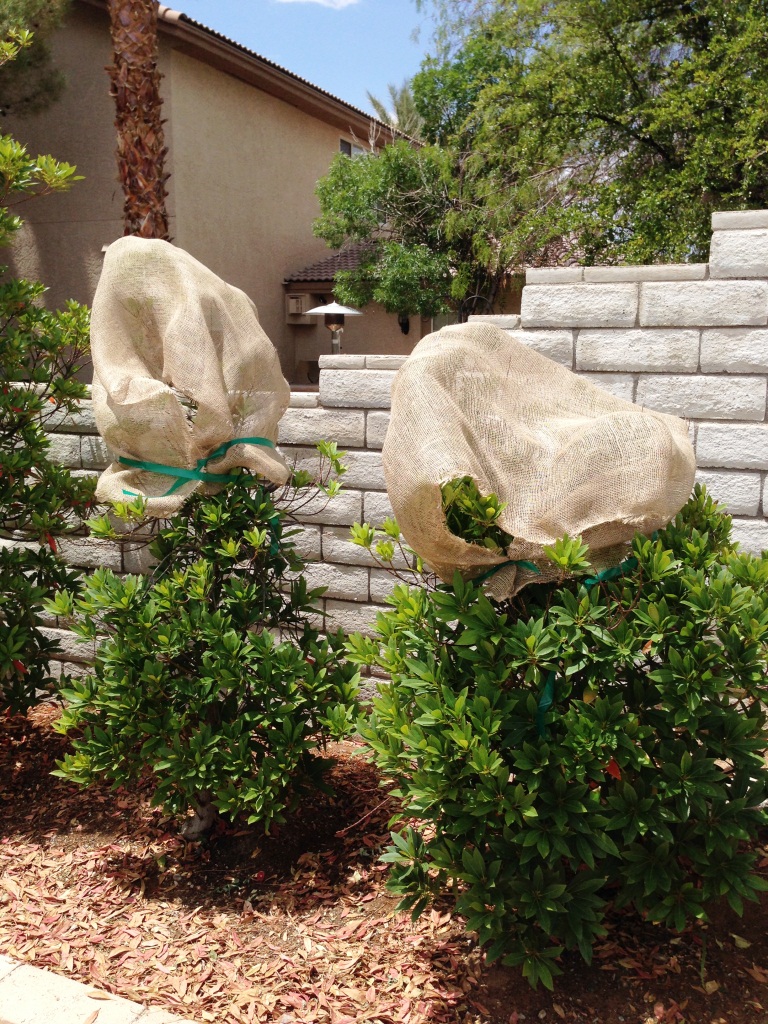Japanese Blueberry in Las Vegas Landscapes
Q. A local tree guide does not recommend planting Japanese blueberry because of “environmental challenges”. We had one at our old house and it was fine. It is the right size and shape for a spot we are considering. Young Japanese blueberry. It does not like the heat and isolation in Las Vegas landscapes. It prefers to be on the north or east sides of a home and surrounded by other plants that need water. The burlap bags on their head is to prevent them from getting sun damage. A. It gets pretty big over time. There are some things that favor it and some things that are not in favor of it. Let’s explore. Water use. In the desert this should be a concern with any plant we are thinking about. The fewer but important plants the better. It is mesic in its water use. It should be watered at the same time as other mesic plants. Try not to water xeric plants at the same time as mesic plants. Xeric (or desert) plants are watered less often than mesic (nondesert) plants. That is one of the reasons xeric plants use less water. Size. It’s slow growing but gets about the same size as European olive; 35×35. East side. It doesn’t like afternoon sun. Too hot for it on the South and West sides. Likes the east side with afternoon shade and surrounded by other plants that need watering. That and its mature size are probably the reasons it is not liked much. It is a low water using plant/shrub but not xeric. If you have the room for it and can afford the water then plant it. Put it on a water valve for mesic plants. Recommended plants for the Phoenix area.
Japanese Blueberry in Las Vegas Landscapes Read More »
